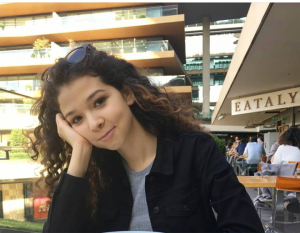
BY ŞEBNEM TÜRE (PSYC/II) sebnem.ture@ug.bilkent.edu.tr
Whether done on one’s own, in a student club or at a professional studio, learning photography is a popular endeavor these days. By introducing you to or reminding you of a few photographs that left a mark on the world even before social media was around, I want to show how beautiful photography is, whether or not you learn how to produce good photographs yourself. Photography is an art, and one that can create icons, influence the world and show more of the varied aspects of humanity as well as the details of the physical world around us.
Iconic Photographs

At left, you see the most famous photograph of Albert Einstein, taken by Arthur Sasse on physicist’s 72nd birthday (March 14, 1951). Next to it is “Guerrillero Heroico” (Heroic Guerrilla Fighter), which shows Che Guevara as photographed by Alberto Korda in Havana on March 5, 1960. Iconic photographs create links to related concepts the moment you see them. The seriousness in Guevara’s face makes you think about Cuba, and his determination to implement his ideals. On the other hand, viewing the funny face Einstein is making creates a contrast between serious science and an interesting, crazy mind.
These photographs have become so iconic over time that many companies have tried to link them to other concepts by using them for advertising purposes. Che has appeared on t-shirts, mugs and posters, becoming a key figure in modern pop culture worldwide – something that did not always make the creator of the image very happy. Korda protested its use to promote products such as vodka and even sued Smirnoff for featuring the photo in an advertisement.
Influential Images

Maybe photography in itself can’t change the world, but it can definitely move people to agitate for change. On the left you see the “Cotton Mill Girl” from 1908, displaying the image of a child working at a cotton factory in the USA. The National Child Labor Committee believed that seeing such images would awaken citizens to demand change, and enlisted the investigative photographer Lewis Hine to help. This photograph, along with others, became a crucial part of the committee’s campaign, which led to new legislation regulating child labor. In the center is photojournalist James Nachtwey’s “Famine in Somalia” (1992). After this photo was published by The New York Times, the International Committee of the Red Cross received its biggest wave of donations since WWII. The last photo, “Terror of War,” dates from 1972 during the Vietnam conflict, but is still effective in raising awareness of the damage to civilian lives that takes place behind the scenes of war. Nick Ut captured an image of Kim Phuc, a terrified 9-year-old who had ripped off her burning clothes, running with her brothers after a South Vietnamese plane accidentally dropped flaming napalm on South Vietnamese troops.
Images From Humanity

In “Of Mice and Men,” John Steinbeck writes, “As happens sometimes, a moment settled and hovered and remained for much more than a moment.” What I love the most about photography is that it captures the most human, “settling” moments and, I think, in this way makes them stand still, never to go away. “Greg Cook and His Dog Coco” from The Decatur Daily shows an old man embracing his dog after he found her alive in the ruins of his house, which had been destroyed by a tornado that struck northern Alabama in 2012. At the other end of the emotional spectrum, the 2013 photo on the left, taken by Nhat Meyer, shows a young man in California who has just learned that his younger brother was stabbed to death.
Photography Beyond the Limit

Photography freezes the moment, and so can show us what’s on the other side, beyond the limits of human vision. “The Falling Man,” one of the most famous and most horrifying photographs in history, was taken during the September 11 attacks by Associated Press photographer Richard Drew. A man falling from the World Trade Center was one of an estimated 200 people trapped on the upper floors who jumped to escape from the fire and smoke or fell searching for safety. On the right we see “Milk Drop Coronet” taken by Harold Edgerton, an electrical engineering professor at MIT. This is a legendary example of experimental photography, in which the professor combined high-tech strobe lights with camera shutter motors. With this stop-motion photograph capturing the millisecond when a drop of milk lands on a table, he demonstrated that photography can enhance human understanding of the physical world in scientific terms as well.
